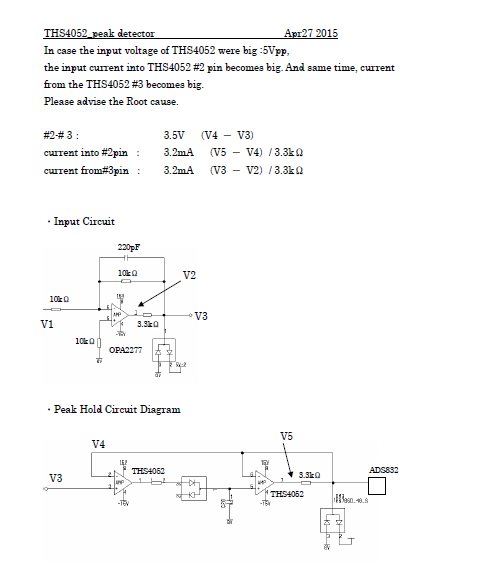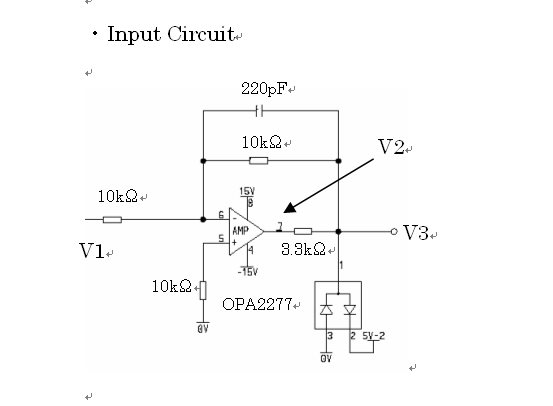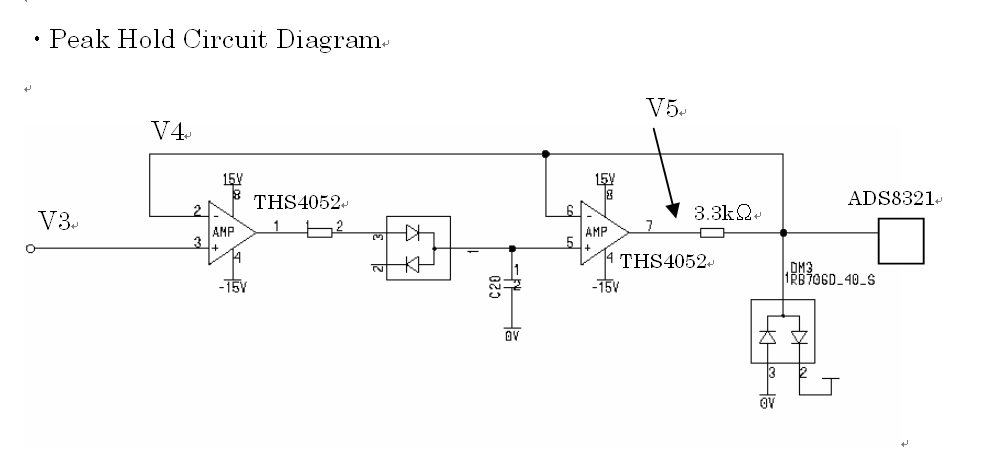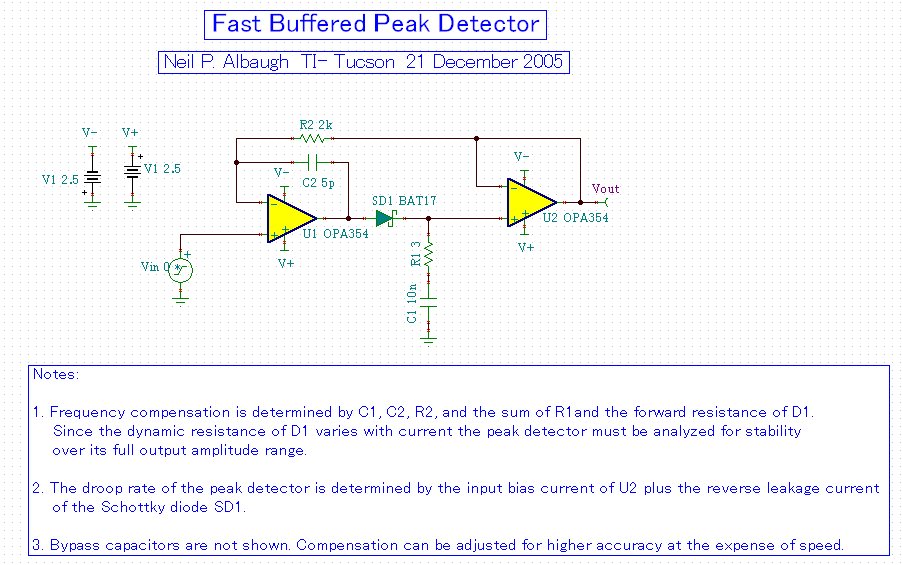Hello,
Please allow me to have a question in addition to other post.
In case using THS4052 for peak detector, and also in case input voltage were large ( 5Vpp; 10KHz ),
the large bias current = 3.3mA into IN- and from IN+ were ovserved un their PCB ( pre-production )...
Cusomter and I also don't know the mecanism/root cause about his.
If customer changed the Opamp to uPC812C and OPA2132 , such a phenomenon did not observed.
We wnat to know the root cause..
Here I attached the question and wave form as .jpg file again.
I am sorry to bother you again, but please advise.






